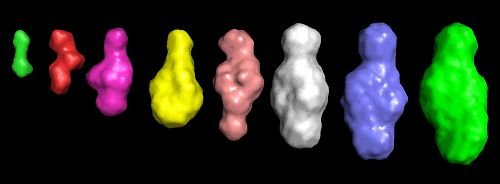Anyone who knows even a little about wine can tell you how important tannins are for wine quality, particularly in red wines. Surprisingly, however, we still don’t fully understand exactly how it is that tannins – or polyphenols – influence wine flavour, ageing, colour and colour stability. Wine is a highly complex and evolving mixture of many diverse compounds and no-one really knows how tannins – which come in several different kinds themselves – interact with other molecules in wine such as anthocyanins (colour compounds), proteins and polysaccharides (from grape berry cell walls).
Rachel Kilmister and Peta Faulkner from the Victorian Department of Environment and Primary Industries in Mildura joined forces with Nigel Kirby in September 2013 to determine the size and shape of a variety of tannins from wine and model systems. The aim was to obtain some preliminary information about tannin size and structure, and to develop the purification and SAXS techniques in tandem to enable further in-depth studies.
Small angle x-ray scattering (SAXS) tells us about the size and shape of molecules in solution, and how these change as molecules interact, perhaps by combining to make larger molecules or breaking down into smaller molecules. Size is really important for wine tannins because the bigger the tannin, the greater its astringency – and the more puckery and astringent the resulting wine would be.
SAXS can create images of molecules as small as one nanometre (one-millionth of a millimetre) across. Around 100,000 molecules this size would fit across the width of a single human hair. For the smaller tannins this is approaching the limits of what is possible with SAXS, but can be done on the Australian Synchrotron beamline with its world class levels of accuracy and sensitivity.

Image above: What tannin molecules actually look like when dissolved in water. The size and shape of these tiny molecules plays a part in how a wine tastes. Image: Nigel Kirby (AS)
Tannins are small molecules that scatter x-rays only weakly, so the synchrotron’s powerful x-ray beams were essential for the work. SAXS can also cover the wide range of molecular and particle sizes that might be encountered in wine components, including any large aggregates or precipitates that could affect wine quality, in a way that no other technique can.
The synchrotron findings will contribute to DEPI’s extensive wine research program and assist the wine industry’s efforts to manage tannins in vineyards and wineries.
ABC radio interview 24 September 2013
DEPI media release
Daily Wine News
